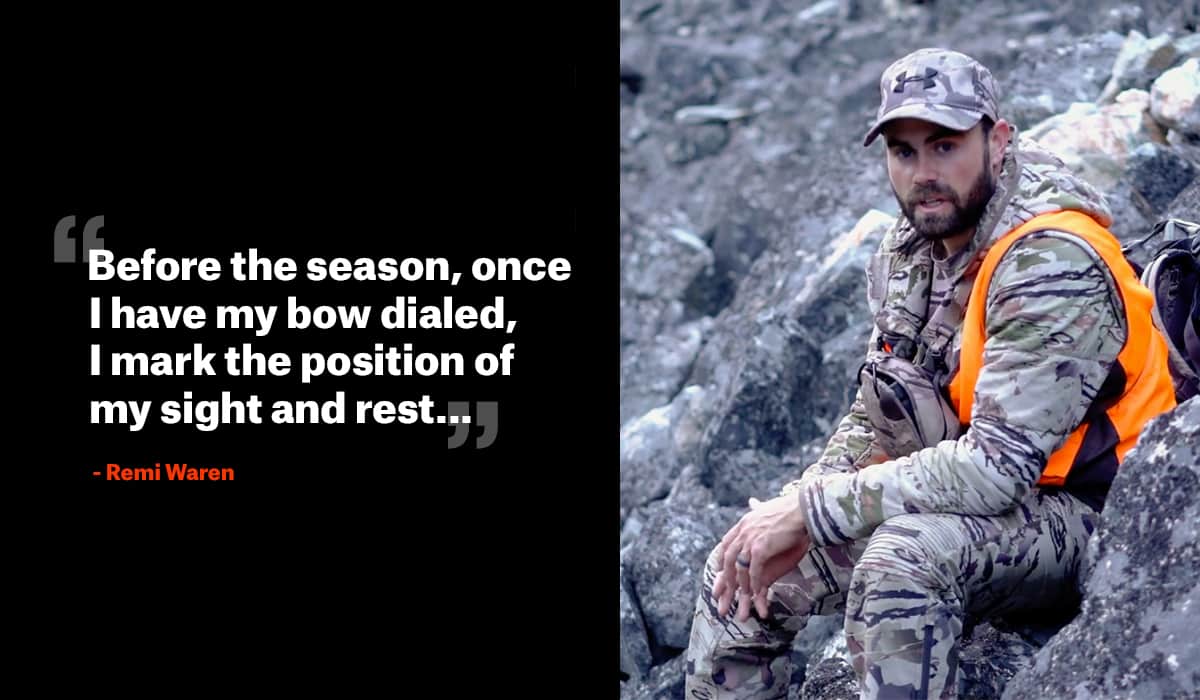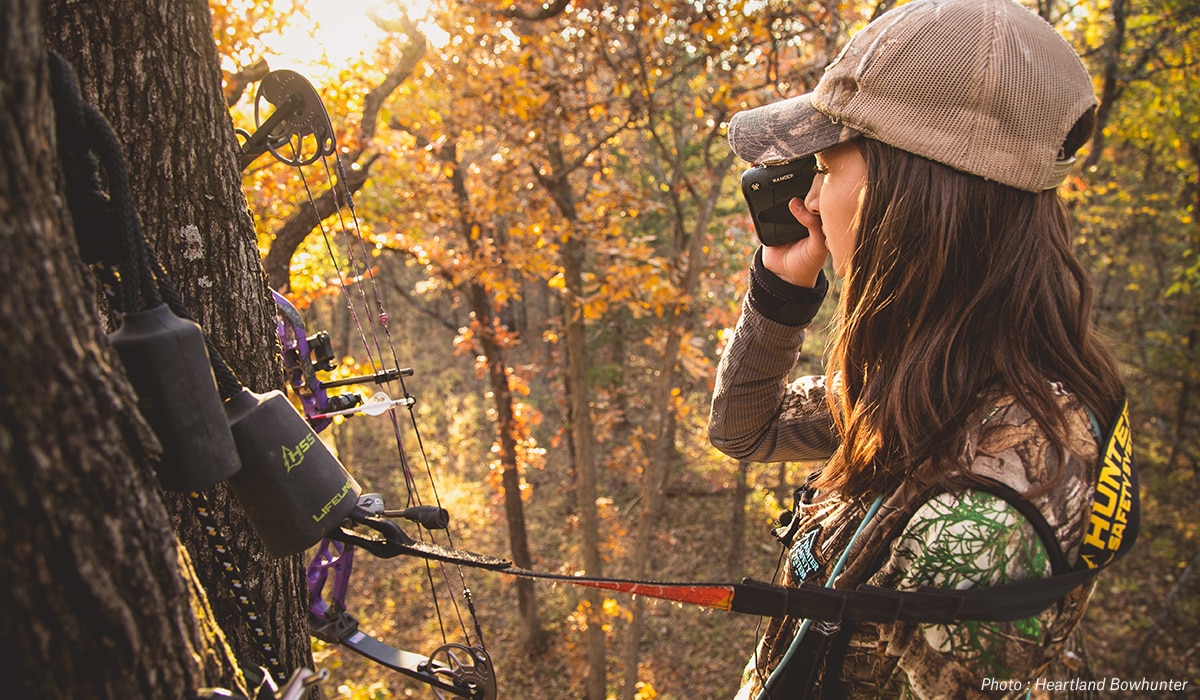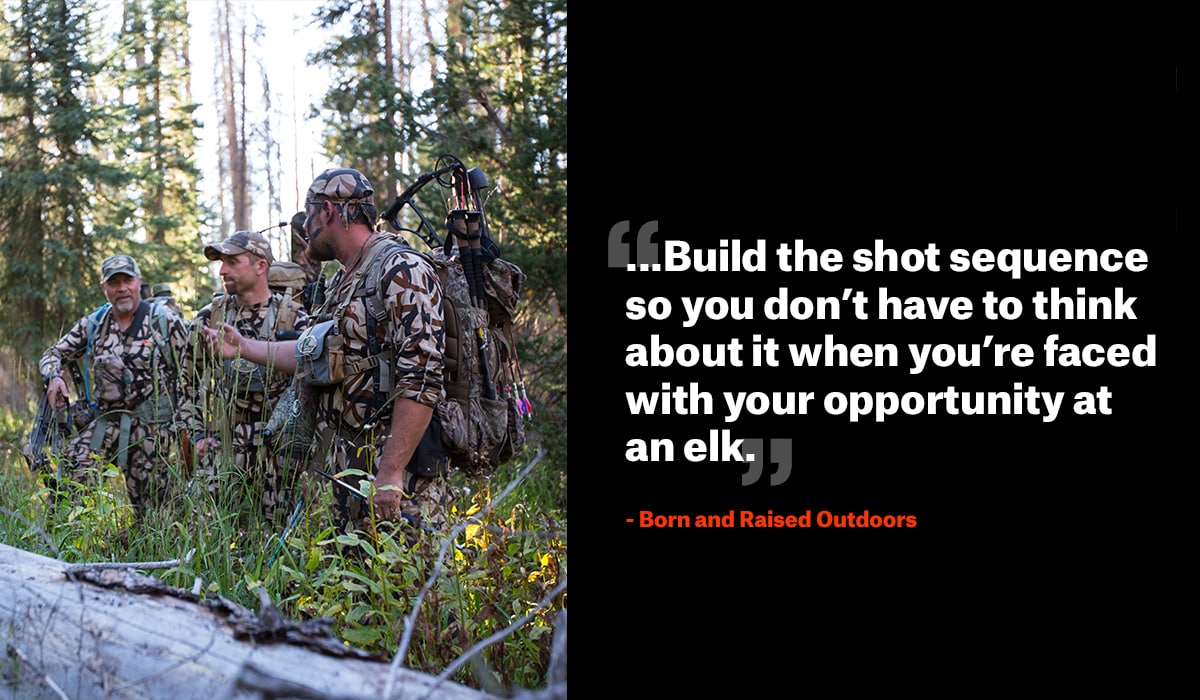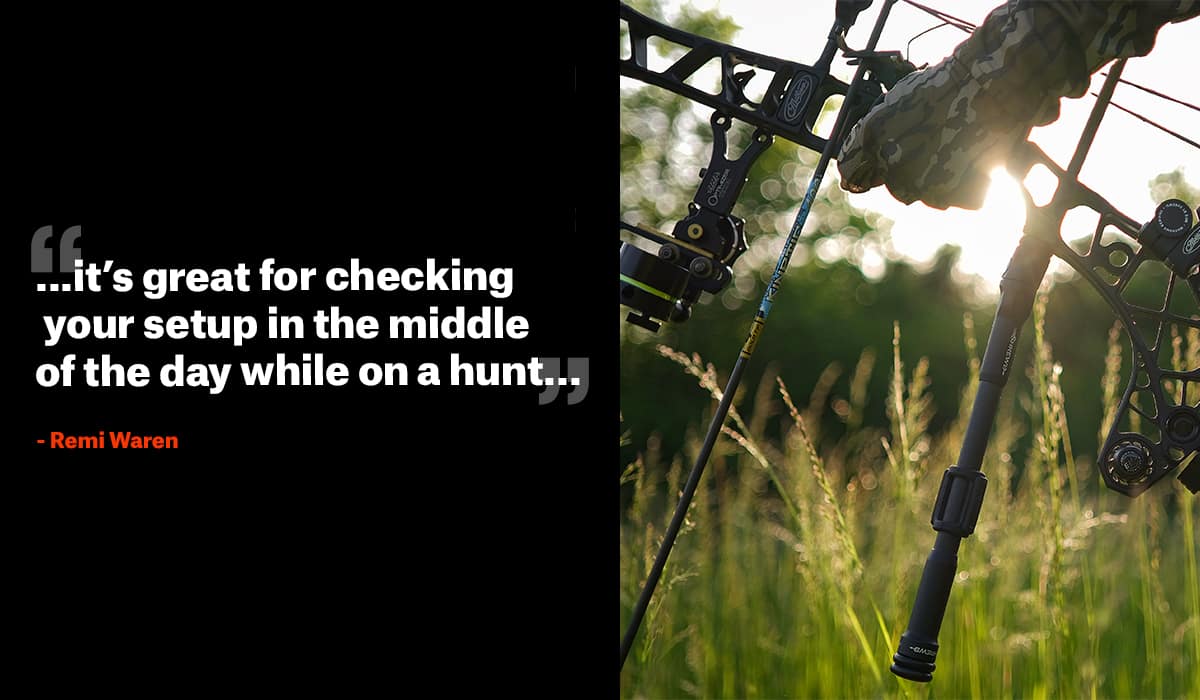We’re kicking off a new series designed to offer quick and easy tactics so you can make the most of your seasons. The goal is to help you avoid many mistakes that we all make, while increasing your odds of success in the field. Keep an eye out for more “Top Tactics” pieces to come, offering quick knowledge from both our in-house onX hunters and the many ambassadors and partners we work alongside.
Bow hunting seasons are just around the corner. You might be daydreaming of your upcoming elk or deer hunts, running through your gear checklist, or finding your “go-to” spot in the onX Hunt App for opening morning. The list of preparation goes on and on. With so much planning and preparation involved before the season, it’s sometimes easy to overlook one of the most important tasks—shooting your bow.
It’s more than just heading out a couple of times before the season to make sure your sight hasn’t been knocked off from last season at a 20-yard bale, but actually shooting your bow in real-life scenarios. Scenarios that, in the coming months, you dream of finding yourself in. We have compiled a list of top tips and tactics to help you get the most out of your archery practice as we approach season openers. That way, when the big moment does present itself, you’ll be ready.
The first step in practicing properly is knowing you have the correct gear. Achieving perfect form and technique can be just short of impossible if you don’t have the right equipment. We recommend heading down to your trusted local archery shop and having them help with all of the gear options listed below. In the shop, you can shoot many bows and feel the differences for yourself. There’s enough information to write a full book with everything you will need, but here are just a few basic tips for new archers looking for their first bow or for someone who needs to reevaluate their current setup.

Hone in Your Bow Hunting Equipment
Types of Bows
- Compound: The most commonly used type of bow these days are compound bows. Modern technology has brought many advances in the last couple of decades allowing for increased speed and accuracy.
- Traditional: The simplistic and historical design of “Trad” bows is still popular today and can be categorized by recurve bows and longbows.
Bow Size and Weight
This will depend on what feels best to you, but also the type of hunting you plan on doing. For example, a tree stand hunter might look for a shorter axel-to-axel compound bow for better mobility.
Bow Draw Length
Your archery shop will be able to help you here but as a general rule of thumb here’s how to measure draw length: use the length of your arm span divided by 2.5.
Bow Draw Weight
You want to be able to comfortably draw your bow while having enough weight to effectively harvest an animal. Rely on your local shop’s expertise to help dial this in.
Bow Speed
There are many factors (draw length, poundage, arrow weight, etc.) that go into bow speed, but each bow will have an IBO (International Bowhunters Organization) standard speed rating.
Bow Accessories
So, you’ve found the right bow. Next, it’s time for bow hunting accessories. And the options are endless (stabilizer, rest, quiver, silencers). Here are a few basics you’ll need:
- A bow release. There are many options: Wrist release, back tension, thumb button, finger tabs, etc. Try them all if possible and see what feels best.
- Proper arrow set-up. Many factors go into the correct arrow and broadhead setup, and each will affect accuracy and penetration (arrow weight, vanes, tip or broadhead, etc.). Talk with your local shop about your individual needs, and they can help.

“Before the season, once I have my bow dialed, I mark the position of my sight and rest. Anything that could possibly move I will trace the outline of where the rest mounts to the bow as well. That way I can make sure nothing has moved during transport or while on the hunt.”
– onX Ambassador Remi Warren
Now that you have a set-up that fits and works for you, here are a few tips and tactics that will help you elevate your off-season practicing and help you prepare for the moment of truth this fall. Some of them may seem basic or obvious, but they frequently get overlooked by many of us. Don’t be the guy or gal that says, “If only I had practiced more (or differently)” after a failed opportunity this season. Put in the time now and prepare for success during the season.

Pre-Season Shooting Techniques
Proper Shooting Form
Go back to the fundamentals. You need to have the correct form before anything else. A few things to keep in a mental check-list are:
- Proper and consistent grip.
- Consistent anchor points.
- Consistent sight picture, release, and follow through.
Practice Daily With Your Bow Set Up as It Would Be in a Hunting Scenario
Far too often, people practice with their quiver off their bow, then hunt with it attached. This will change the feel and possible accuracy of your shot. Shoot with the exact set-up you intend to hunt with, ensuring you have the same feel when you’re both training and hunting.

“The biggest thing we focus on in a pre-season practice session is building confidence in our setups. Having confidence is key to heading into the elk woods. Focus your mind when you draw back your bow, simulating the moment of aiming at your elk and executing a perfect kill shot. Build the shot sequence so you don’t have to think about it when you’re faced with your opportunity at an elk.”
– onX Ambassadors Born and Raised Outdoors
Practice Shooting from Hunting Positions
We’ve all done it. Get to the range, stand behind the line, and shoot 20 arrows before packing up and heading home. If you will be shooting from an elevated position (tree stand), seated out of a ground blind or kneeling, make sure you are practicing from those same positions.
Practice in Different Lighting
Shoot at dawn, dusk, in the sun, in the shade, etc. Different lighting can change your sight picture. Most of the time we practice with good light, but many times our shots occur in the fading light of dusk.
Practice Using the Bubble Level to Form Good Muscle Memory
Ensuring your bow is level is crucial, especially on longer shots. Pay attention to the level on your sight to help you form muscle memory of a level bow at full draw.
Practice Longer Shots Than You Expect to Take
If you feel comfortable with a 40-yard and in shot on an animal, consider practicing at twice that distance. The more you perfect longer shots, the easier the mid- to short-range shots will become.
Shoot 3D Targets
Shooting a block target with a dot is great for picking a spot and making sure your groups are good, but it is not the same as settling your pin on an animal. Make sure to mix in some 3D targets and shoots when possible.
Shoot First, Range Second
If you rely heavily on your rangefinder, you are not alone. Having the ability to accurately guess yardage to your target could mean the difference between a punched tag and a missed opportunity. Practice shooting unknown distances, then verifying the correct yardage afterward.
Shooting / Tuning Broadheads
Make sure you are also practicing with the broadheads you will be using when it is go time. You will want to make sure the point of impact is the same between your field tips and broadheads and that your bow is properly tuned with both.

“During the summer I also add in some practice with a rubber blunt tip. I know where this tip hits and always have one with me in the field; it’s great for checking your setup in the middle of the day while on a hunt or for shooting grouse if in season to add some great camp meat to the backcountry menu.”
– onX Ambassador Remi Warren
Practice With the Same Gear and Clothing With Which You Plan to Hunt
If you are going to be hunting and shooting with a binocular harness and/or backpack, make sure you are shooting with them on as well. It is important to be comfortable and confident shooting in real hunting scenarios.
Hopefully, these tips will help you make the most of your pre-season bow shooting. Put the time in now, and you won’t regret it when that bull challenging your bugle comes running into your setup, or that whitetail you’ve been watching for the past couple of years slips up and walks under your stand. Get out there and practice like it’s the real deal—and don’t forget to save your maps on the onX Hunt App before heading to the field this season. Good luck and shoot straight.